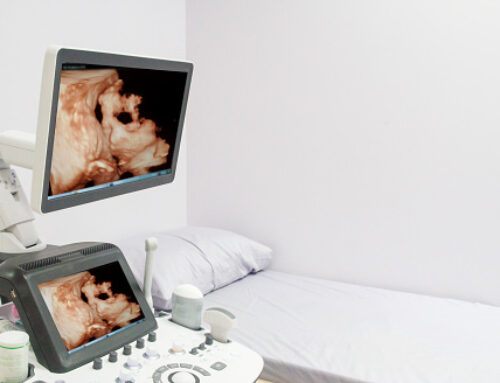You ’ll want to see your baby as soon as that redundant line emerges on the gestation test to make it all accurate. This can be done relatively beforehand on with a gestation ultrasound. This first gestation ultrasound might bring up a flood tide of passions, making you both happy and upset. still, knowing what to anticipate can help you relax and enjoy the process. When your midwife says the word “ ultrasound ” for the first time, you might be confused about what it implies. Continue reading to learn everything you need to know about your gestation’s first gestation ultrasound.
What’s a gestation Ultrasound, and how does it work?
Ultrasound imaging is a process that creates an image by using high- frequence sound swells that bounce off structures inside the body. Ultrasound is generally used during gestation because it doesn’t involve radiation like other imaging styles. The sound doesn’t jeopardize the mama or the baby. As a result, you can feel secure going into your first gestation ultrasound.

How to Get Ready for a gestation Ultrasound test
You want your croaker to be suitable to see your uterus. Fortunately, an ultrasound doesn’t bear expansive medication. Satisfy your hunger. A typical antenatal
ultrasound doesn’t need you to gormandize. Hydrate! Looking from the outside is a little simpler with a full bladder. still, you may be asked to clear your bladder before the test, If the croaker
requires a near look. It’ll take you far lower time to pee than it’ll fill your bladder, so drink as important as you can.
In your first gestation ultrasound, what does the croaker look for?
Your croaker will perform this original ultrasound to insure that your gestation is feasible and healthy. This will also help them prognosticate your due date more precisely, as guessing the first day of the last period is not always accurate. This test also informs your croaker about the number of babies on the way. gravidity involving halves or multiples bear a little redundant attention, and early discovery can help decide this. Croakers can also spot specific anomalies that may arise beforehand on during this fashion. For illustration, if your child has a significant chromosomal abnormality, this can help you make an early decision on what to do next. Do n’t be scarified by all of this information. Know that each gestation has a 96 to 97 per- cent chance of producing a healthy child. Let’s take a look at some of the specific signs of a healthy gestation that your croaker will look for in your womb. You should be suitable to hear and see your child’s twinkle. still, nothing will prepare you for the enormous excitement you ’ll experience when you see this magnific moment for yourself. Your croaker will also measure the foetus. They ’ll also look for a structure known as the thralldom sac, which will feed your baby until the placenta is completely formed. The croaker will measure the placenta and check for placement if you gain this imaging closer to 12 weeks. They ’ll also limit the quantum of amniotic fluid in your uterus to ensure that your baby is well defended from the rudiments.
What Is the Earliest You Can Get a gestation Ultrasound?
Numerous ladies look forward to seeing their kiddies for the first time. Some people want to see their baby, while others need to believe it because they may not be pregnant yet. So, when is your first ultrasound listed? Imaging tests are doubtful to identify your baby before six weeks because it’s only the size of a pea and growing at a rapid-fire rate. To insure a clear sight of the child, utmost croakers prefer to stay until seven or eight weeks. At this point, external ultrasonography generally ca n’t pick up the image. As a result, the croaker will nearly always choose an internal ultrasound.
External vs Internal Ultrasound on the inside
The technician will apply a special gel across your lower breadbasket during an external ultrasound. also, to produce an image on the screen, they will gently push a transducer against your tummy. This type of checkup picks up more significant structures. Internal ultrasound, also known as transvaginal ultrasound, is slightly more invasive. The technician must introduce a inquiry into the vaginal conduit for this operation. While the transvaginal ultrasound may be uncomfortable, neither imaging procedure is painful. still, you may feel some pressure from both, as they press to shift other constructions to gain a better perspective.
Is the Technician Going to Tell Everything?
Ultrasound technicians can point out structures on the screen. They can not, still, read the image to you. A croaker can only give a opinion. So do n’t be concerned if your device remains silent. Some people go to great lengths to avoid any complications. still, they may invite another person into the room, If your technician suspects a problem. Don’t incontinently come terrified; this could be a slight misreading or a mistake on their part. Once your croaker receives the checkup, they will give you a comprehensive breakdown.
Is the Technician Going to Tell Everything?

Ultrasound technicians can point out structures on the screen. They cannot, still, read the image to you. A croaker can only give a opinion. So do n’t be concerned if your device remains silent. Some people go to great lengths to avoid any complications. still, they may invite another person into the room, If your technician suspects a problem. Don't incontinently come terrified; this could be a slight misreading or a mistake on their part. Once your croaker receives the checkup, they will give you a comprehensive breakdown.





